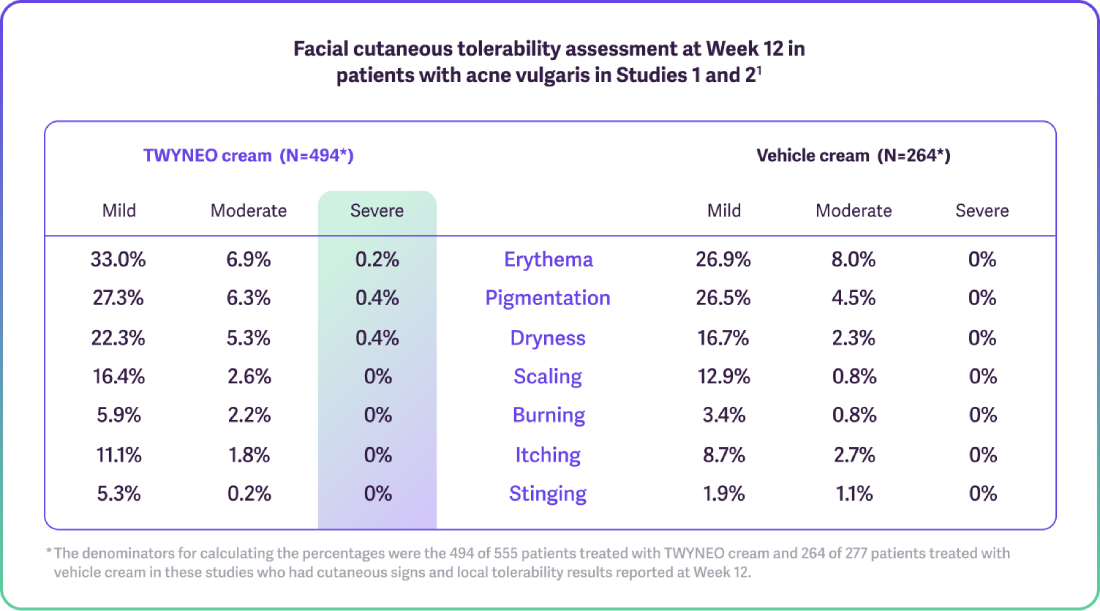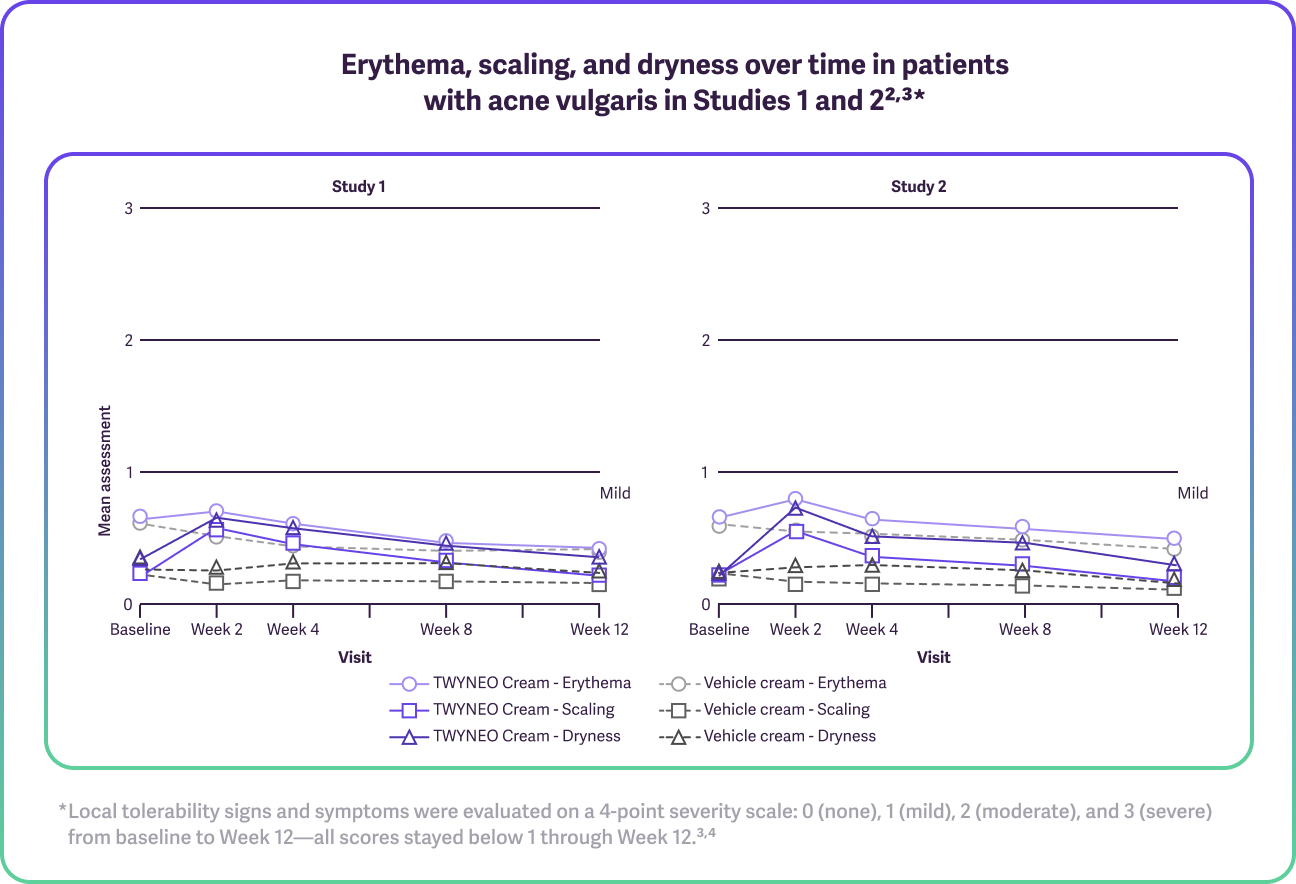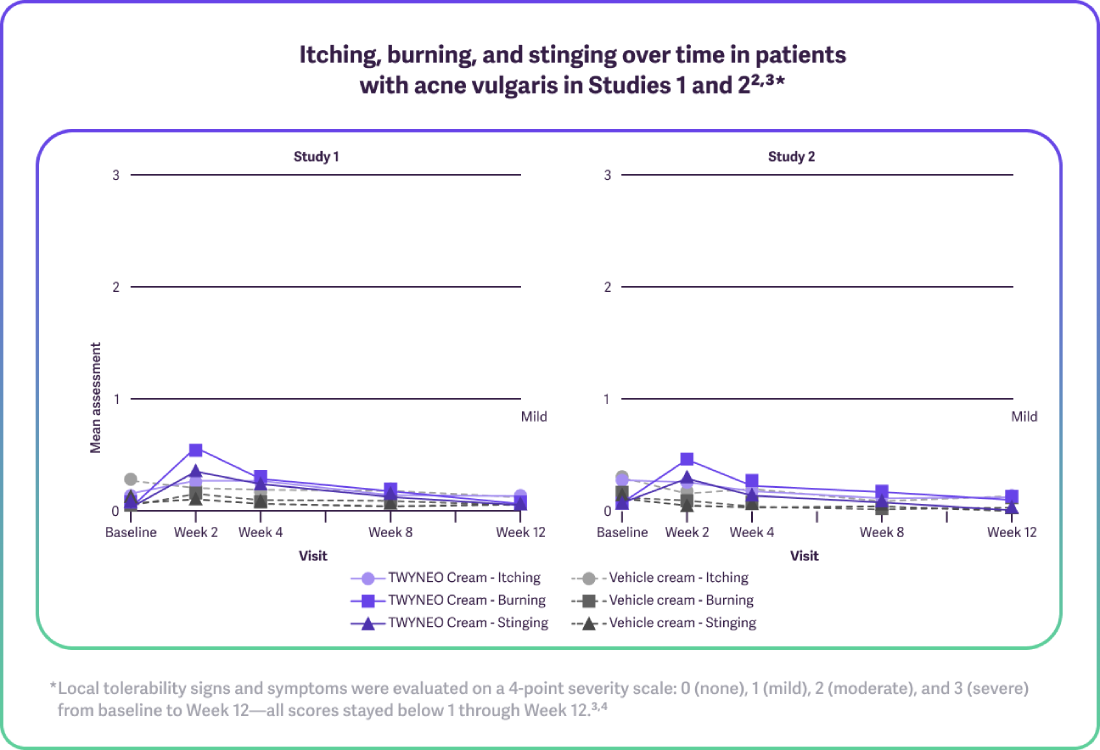
Potent doses combined with skin in mind
Not an actual patient.
∼90% of patients who used TWYNEO cream in clinical studies stayed on therapy through Week 121-3
*
Local tolerability signs and symptoms were evaluated on a 4-point severity scale: 0 (none), 1 (mild), 2 (moderate), and 3 (severe) from baseline to Week 12—all scores stayed below 1 through Week 12.2,3
References: 1. TWYNEO (tretinoin and benzoyl peroxide) cream, 0.1%/3% [Prescribing Information]. Fort Worth, TX: Mayne Pharma; July 2021. 2. Mayne Pharma; data on file. Clinical Study Report SGT-65-04; May 28, 2020. 3. Mayne Pharma; data on file. Clinical Study Report SGT-65-05; June 5, 2020.
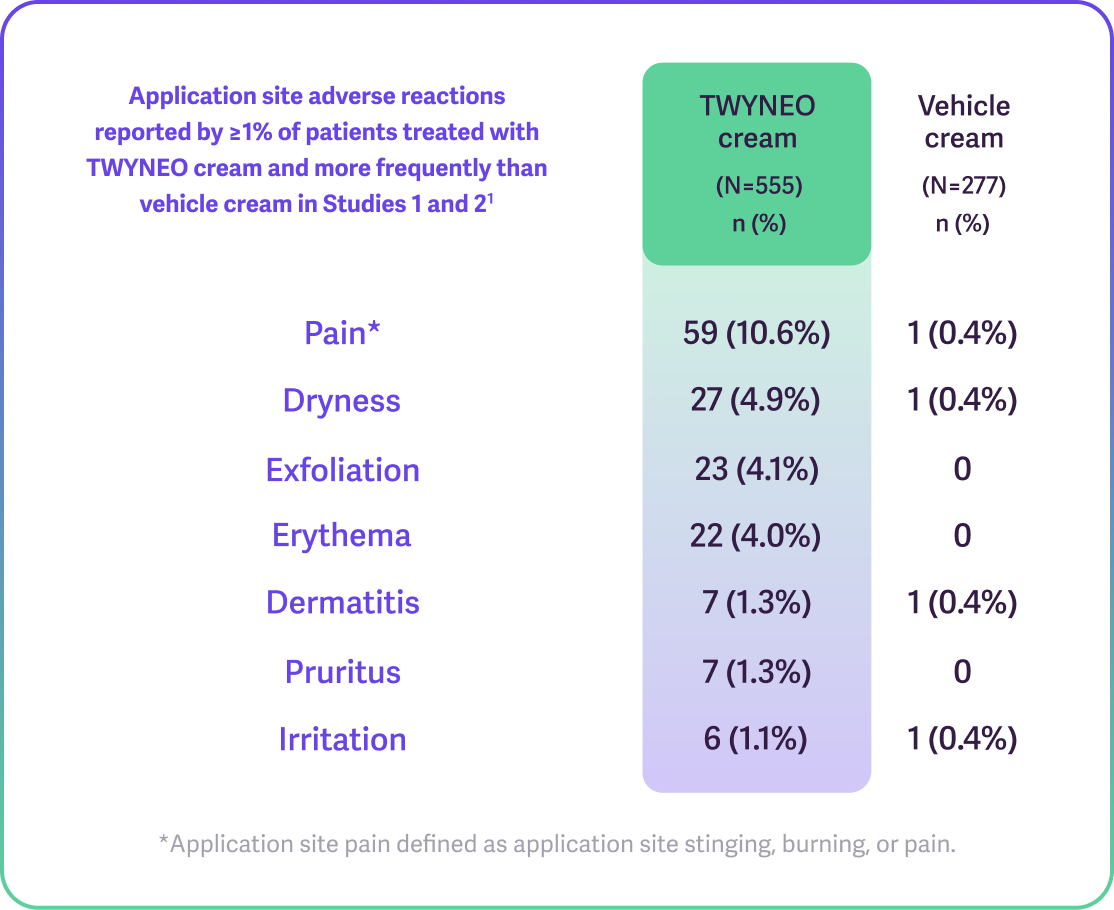

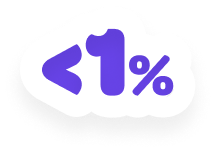 of patients had a severe adverse reaction.2,3
of patients had a severe adverse reaction.2,3